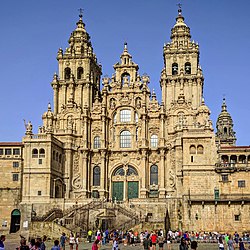
by percentage of country population
95–100% | |
90–95% | |
80–90% | |
70–80% | |
60–70% | |
50–60% | |
30–40% | |
20–30% | |
10–20% | |
5–10% | |
2–4% | |
< 1% |
| Christianity by country |
|---|
 |
| |
| Part of a series on |
| Christianity |
|---|
 |


Christianity is the predominant religion in Europe. [2] Christianity has been practiced in Europe since the first century, and a number of the Pauline Epistles were addressed to Christians living in Greece, as well as other parts of the Roman Empire.
Contents
- Overview
- History
- Early history
- East–West Schism and Protestant Reformation
- Cultural influences
- Denominations
- See also
- Notes
- References
According to a 2010 study by the Pew Research Center, 76.2% of the European population identified themselves as Christians. [3]
As of 2010, Roman Catholics were the largest Christian group in Europe, accounting for more than 48% of European Christians. [3] The second-largest Christian group in Europe were the Orthodox, who made up 32% of European Christians. [3] About 19% of European Christians were part of the mainline Protestant tradition. [3] Russia is the largest Christian country in Europe by population, followed by Germany and Italy. [3]
Since at least the legalization of Christianity by the Roman Emperor Constantine in the 4th century, Europe has been an important centre of Christian culture, even though the religion was inherited from the Middle East and important Christian communities have thrived outside Europe such as Oriental Orthodoxy and the Church of the East since the time of Christ. Christian culture has been an important force in Western civilization, influencing the course of philosophy, art, and science. [4] [5]





